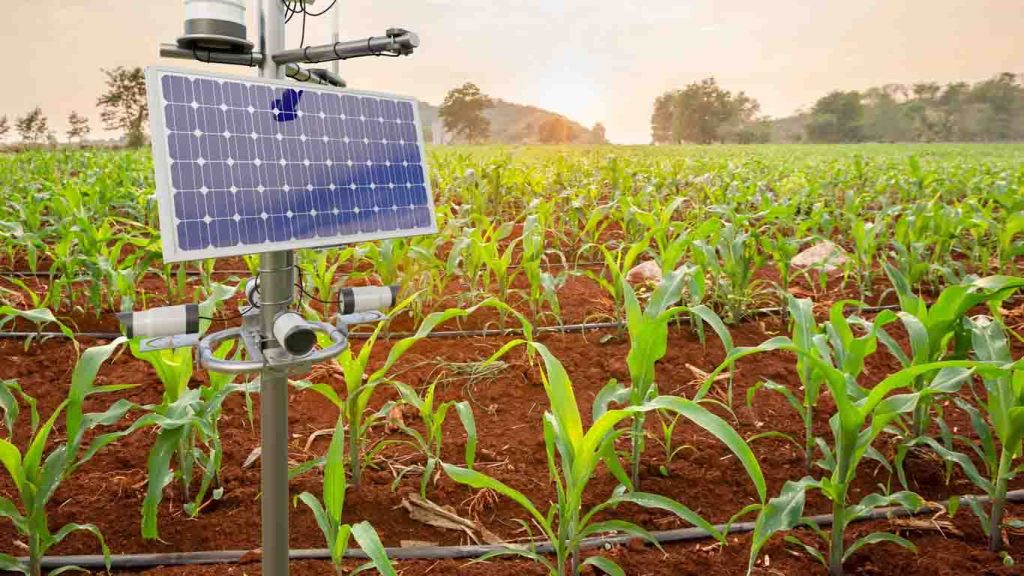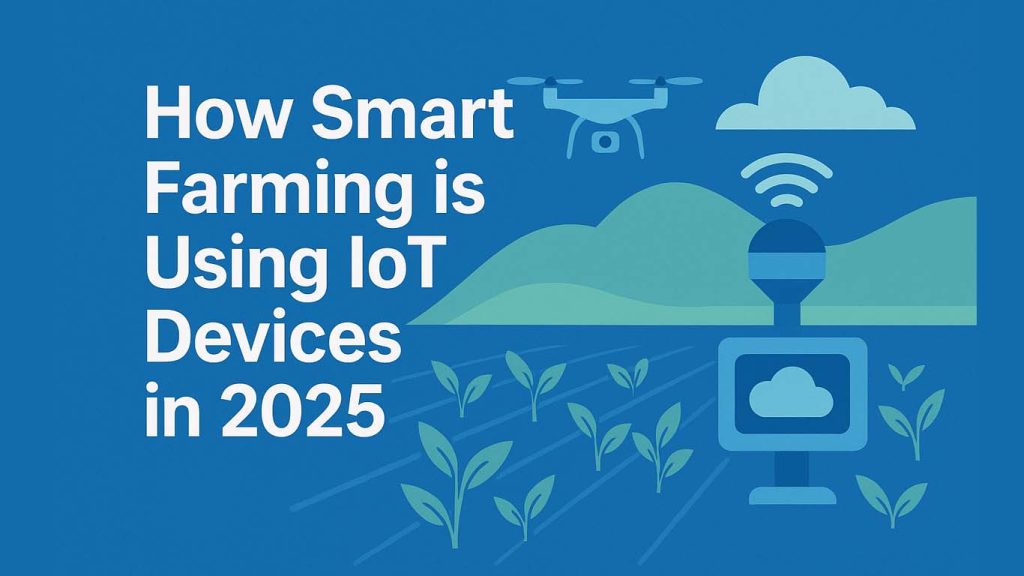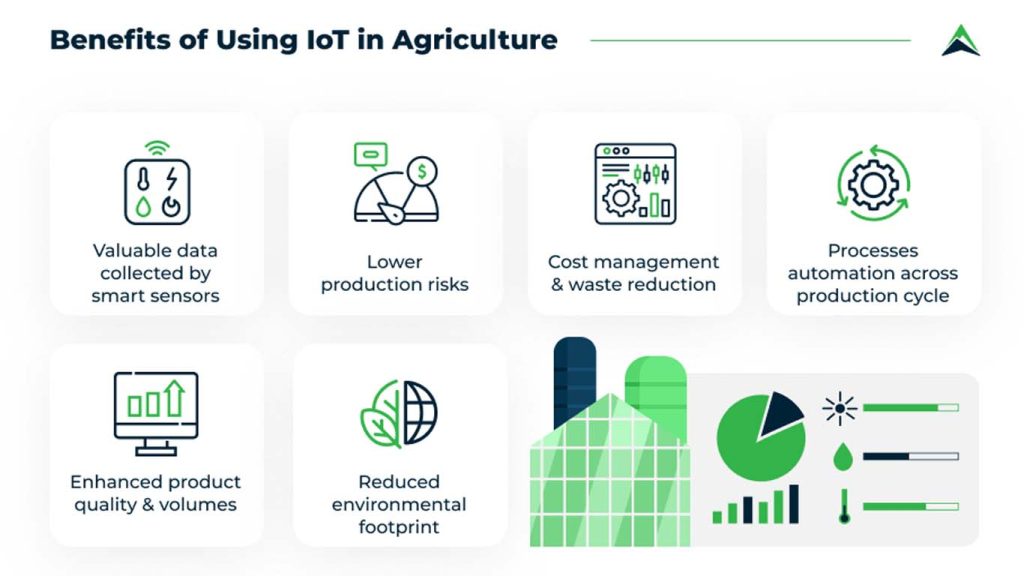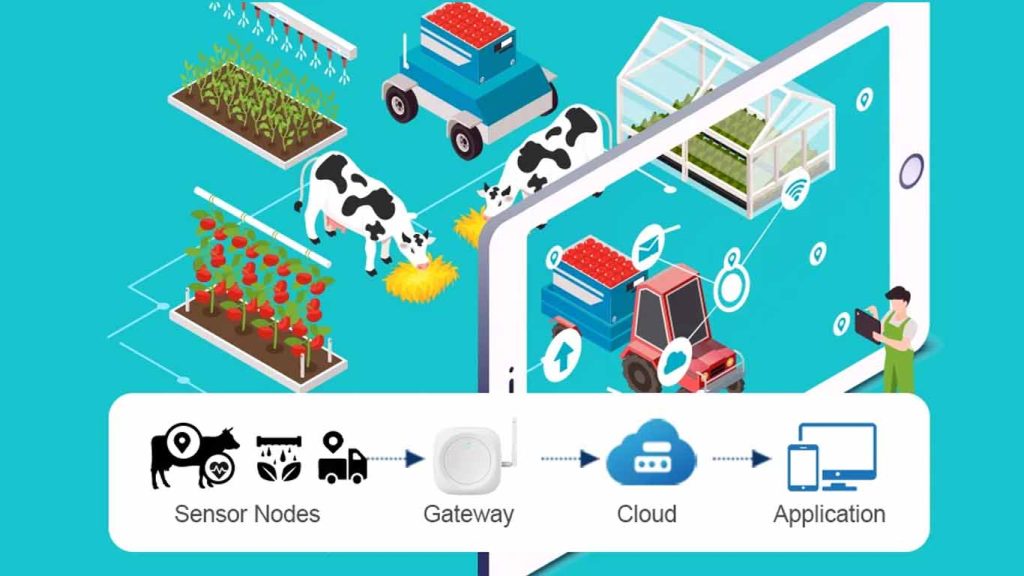
How Smart Farming is Using IoT Devices
In a world grappling with rising populations, climate change, and shrinking arable land, smart farming stands as a beacon of hope. Also known as precision agriculture or connected farming, smart farming leverages advanced digital technologies to optimize resource use, boost yields, and foster sustainability.
Central to this transformation is the Internet of Things (IoT)—a network of interconnected sensors, devices, and analytics platforms capable of turning data into actionable insights. By 2025, farmers globally are tapping into the power of IoT devices to monitor soil health, automate irrigation, track livestock, deploy autonomous machinery, and analyze data—all in real time.
Let’s explore how these innovations are reshaping agriculture and laying the groundwork for a resilient, efficient, and sustainable Smart Farming future.
2. IoT Integration in Smart Farming: What’s New in 2025
2.1 Sensors: Eyes and Ears in the Field
- Environmental & Soil Sensors
Smart sensors now regularly track soil moisture, temperature, humidity, pH levels, and nutrient content, enabling precise irrigation and fertilization. Studies confirm widespread deployment of WSNs (wireless sensor networks) for real-time data collection to optimize growth and reduce waste AIMultipleFrontiers. - Air Quality & Microclimate Sensors
These assess ambient humidity, temperature, and air pressure to help manage crop microclimates and adapt to impending weather changes AIMultipleDigi.
2.2 Drones & Aerial Monitoring
- Multispectral & Thermal Drones
Equipped with advanced cameras, these aerial devices offer granular insights into crop health, stress factors, and hydration needs across wide areas FrontiersDigi.
2.3 Automated Machinery & Robotics
- Driverless Tractors
Proliferating by 2025, these tractors use GPS, LIDAR, CAN-bus systems, and remote controllers. They execute tasks like planting or plowing autonomously, with oversight from humans monitoring their operation Wikipedia+1. - Robotic Weeders & Harvester Bots
Technologies like Blue River’s See & Spray reduce herbicide use by 90%. Laser-enabled weeders (e.g., LaserWeeder), lettuce-thinning bots, and solar-powered sprayers like ecoRobotix exemplify precision weeding and harvesting Wikipedia+1.
2.4 Smart Irrigation & Resource Control
- Automated Systems
IoT-enabled irrigation systems operate on soil data, weather patterns, and analytics to determine when and how much water to apply, drastically cutting waste Farmonaut®DigiarXiv. - Resource Usage Optimization
AI-powered platforms and smart irrigation frameworks, such as those tested in Uganda’s maize farms, improved irrigation efficacy while conserving water arXiv.
2.5 Livestock Monitoring & Pest Detection
- Smart Livestock Sensors
Wearable tech and environmental sensors monitor animal health, location, and stress, enabling prompt interventions Farmonaut®Digi. - IoT + AI for Pest Control
Innovations like Spotta’s pheromone-based sensors detect pests early—especially red palm weevils—and use AI to alert farmers to act before infestations escalate, achieving detection up to three months earlier Business Insider.
2.6 Data Analytics & Cloud Integration
- Edge Computing & AI Analytics
Farm data—sensor readings, drone imagery—is analyzed via AI models both in the cloud and at the edge, empowering real-time interventions and predictive decision-making Farmonaut®Land-Grant PressSpringerLink. - End-to-End Frameworks
Controlled environment agriculture tools—hydroponics, vertical & soilless systems—leverage IoT sensors to manage environmental control, water, and nutrient delivery for constant yields arXiv. - Automated Work Logging
One Japanese study demonstrated retrofitting legacy farm machinery with IoT GNSS and BLE sensors to auto-track work type, traction, and implement use—improving record accuracy and labor efficiency arXiv.

3. Benefits of IoT in Smart Farming
3.1 Increased Crop Yields & Productivity
By using sensors, drones, and analytics, farmers can detect issues early and deliver resources precisely, boosting yield and crop health. Globally, IoT adoption is reshaping how farms manage productivity DigiLitslinkBusiness InsiderSpringerLink.
3.2 Efficient Resource Management
- Water & Nutrient Savings
Smart irrigation reduces water use by up to 50%, while AI resource optimization cuts fertilizer and water waste significantly DigiDigitalDefynd Education. - Reduced Chemical Input
Precision spraying and pest detection minimize pesticide use—e.g., robotic sprayers and AI sentinel sensors reduce environmental and worker exposure Business InsiderWikipediaAP News.
3.3 Environmental Sustainability
Remote monitoring and targeted automation reduce chemical runoff, water excess, and carbon footprint, aligning agriculture with climate-smart goals AP NewsFinancial TimesSpringerLink.
3.4 Labor Savings & Operational Efficiency
Autonomous machines and IoT-based systems shift labor burden away from repetitive tasks—valuable amidst labor shortages and seasonal peaks Land-Grant PressAP NewsDigi.
3.5 Food Security & Supply Chain Traceability
IoT-enabled supply chain tools—trackers, temperature sensors—ensure traceability and freshness, reducing food loss and enhancing safety Digi.
3.6 Smallholder Farmer Inclusion
Climate-resistant IoT frameworks developed for maize Smart Farming in Uganda demonstrate cost-effective, accessible tech for smallholder farmers arXiv.
4. Challenges & Limitations
4.1 High Initial Investment
Costs for sensors, drones, connectivity, and AI platforms remain substantial—hindering widespread adoption in low-resource regions Business InsiderarXivAP News.
4.2 Connectivity Constraints
Rural areas still face unreliable network infrastructure, which restricts real-time data transfer and system robustness Business InsiderJacksonville Journal-Courier.
4.3 Data Privacy & Security
With farms increasingly digital, protecting sensitive data—yields, schedules—against cyber threats remains a concern Business Insider.
4.4 Sensor Accuracy & Calibration
The effectiveness of analytics depends heavily on the accuracy and reliability of sensor data—bias or errors can skew modeling output DigitalDefynd EducationarXiv.

5. Real-world Case Studies & Expert Insights
5.1 Banana Farmers Embrace Smart Tech (India)
A recent initiative by the ICAR–National Research Centre for Banana (NRCB) equips banana orchards with AI, IoT sensors, drones, and analytics to optimize irrigation, monitor weather, and detect fungal threats—improving crop outcomes with smartphone-based control The Times of India.
5.2 Real-Time Crop Disease Detection (IIIT-Allahabad)
Researchers developed the CVGG-16 model, combining IoT sensors (moisture, humidity, temperature) with AI to detect diseases in maize and potatoes with 97.25% accuracy. The system uses federated learning for data privacy and plans mobile app integration for accessibility The Times of India.
5.3 Autonomous Smart Farming Tools at CES 2025
John Deere showcased driverless tractors capable of pesticide and fertilizer spraying, controlled via smartphones. Kubota revealed AI-driven systems that detect crop disease and pests to optimize chemical application—highlighting climate-smart ag tech innovation AP News.
5.4 Spotta’s Smart Pest Sensors
Spotta’s IoT-enabled, pheromone-based sensors detect pests early using AI classification, enabling precise pesticide deployment and reducing field worker exposure. Trials in Qatar and the UAE achieved detection up to three months earlier than traditional approaches Business Insider.
5.5 UG Smart Farming IoT (Uganda)
A climate-resilient IoT framework in Uganda supports maize farmers with cost-effective, local strategies, improving irrigation and yield without creating technological barriers—bridging development goals and sustainable Smart Farming arXiv.
5.6 Autonomous Data Logging in Japan
Researchers retrofitted older machinery with GNSS, LTE, and BLE sensors to automatically record hundreds of field operations across seven months—demonstrating that even legacy tools can support smart farming with IoT upgrades arXiv.

6. Future Trends & Expert Perspectives
6.1 AI-Driven Predictive Analytics & Edge Computing
Growing adoption of edge computing combined with AI allows near-instant decisions on irrigation, pest control, and harvest timings—minimizing latency and boosting resilience Farmonaut®SpringerLinkFrontiers.
6.2 5G & Network Expansion
As 5G networks penetrate rural areas, they enable high-bandwidth IoT applications like real-time drone feedback and automaton coordination—supporting precision ag at scale Telit CinterionJacksonville Journal-Courier.
6.3 Sustainable, Biodegradable Sensors
Research efforts, including the NSF-funded IoT4Ag, aim to develop biodegradable soil sensors for nutrient and environmental monitoring—minimizing agricultural waste Business Insider.
6.4 AI-Embedded Mobile & Vernacular Tools
In India, platforms like KissanAI’s Dhenu 1.0 provide voice-based, multilingual (English, Hindi, Hinglish) AI support for farmers, boosting accessibility and inclusion—recently achieving 40% yield improvement and 50% production cost reduction Wikipedia.
6.5 Sustainability-Focused Policy & Funding
Precision ag and IoT are increasingly receiving support from policymakers emphasizing sustainability, food security, and rural connectivity—crucial for scaling smart farming across geographies Jacksonville Journal-CourierFinancial Times.
7. Conclusion: The Promise of Smart Farming IoT
In 2025, smart farming isn’t a futuristic fantasy—it’s a thriving reality. IoT devices—from sensors and drones to autonomous tractors and smart irrigation—empower precision, efficiency, and sustainability in agriculture. These technologies are:
- Boosting yields
- Saving water and chemicals
- Reducing labor reliance
- Fostering food security
- Enabling smallholder inclusion
Yet challenges like cost, connectivity gaps, and data trust remain. Busy innovators—from researchers to agritech startups—are addressing these with advances in biodegradable sensors, mobile AI tools, and local metadata intelligence.
The future of agriculture is intelligent, connected, and responsible. And IoT-driven smart farming is leading the way.
